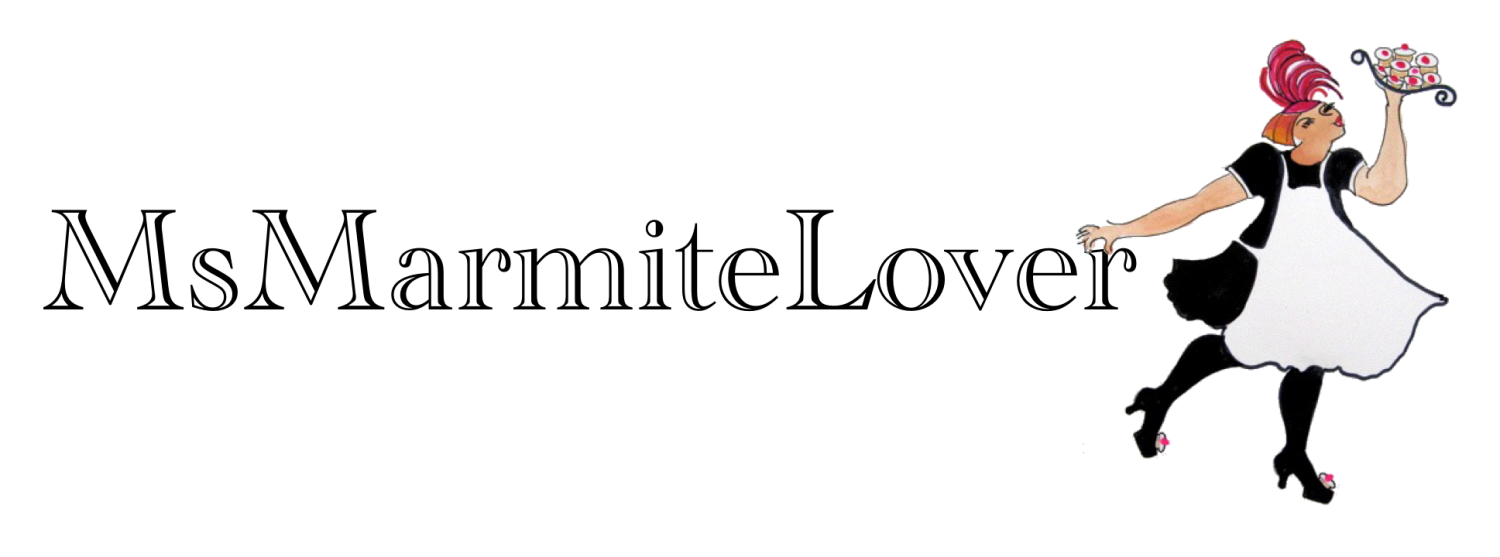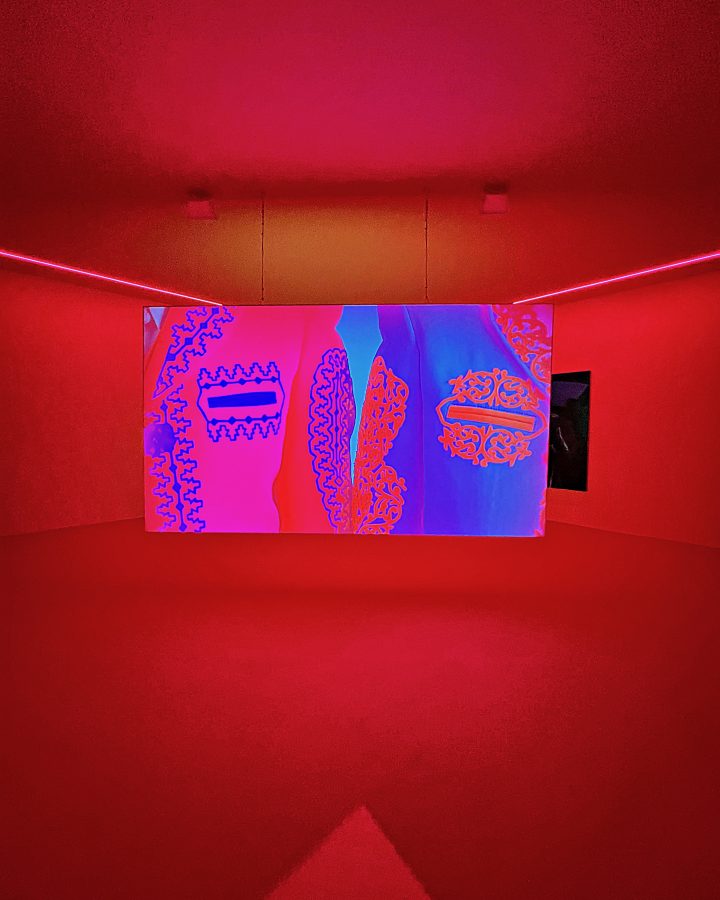 The theme of this year’s Venice biennale, which runs until November, is ‘Foreigners Everywhere’. As a result there is a huge emphasis on immigrant artists and their stories. This was evident in several pavilions displaying indigenous (strangers in their own land), foreign or ethnic heritage artists.
The theme of this year’s Venice biennale, which runs until November, is ‘Foreigners Everywhere’. As a result there is a huge emphasis on immigrant artists and their stories. This was evident in several pavilions displaying indigenous (strangers in their own land), foreign or ethnic heritage artists.
Most of the national pavilions are in the Giardini – one of the two main locations, the other being the Arsenale – to see the exhibits, but there are free installations and exhibits all over Venice. It’s a great opportunity to see the hidden side of the city, the parts you wouldn’t normally visit. The price has gone up since 2022, from 25 to 30€ for one day in each main site. Buy the ticket online to avoid queues.
Each site opens at 11am. Get there early if you are in Venice for a short time. It took me around five hours to see each; this way you’ll have some time to visit more of the city. After most of the day at the Arsenale, I took a series of boats to get to Burano, the island with coloured houses.
Another tip for those on a budget: I used google maps to find a local panetteria and bought a pizzette and an olive topped focaccia, each about 2 euros. The cafés near the main Biennale sites will charge a lot more for the same thing. There are places to eat and drink inside but there are queues and I’m not sure how good they are, as I haven’t tried them.

The Australian pavilion showed the work of Archie Moore, of aboriginal heritage, who won the Golden Lion award for the Best National Participation. He’d covered the huge black board walls with a white chalked, complex and immense family tree, an ancestry going back 65,000 years. The colossal scale was effective.
Less effective was the work of Londoner Sir John Akomfrah, of Ghanaian descent, who was given the British pavilion. Although it was visually aesthetic and beautifully filmed, his agit prop politics seemed years out of date and rather irritating.
My favourite pavilion was Austria: Russian artist Anna Jermolaewa moved to Vienna at the age of 19, sleeping on railway station benches. She uses video, painting, sculpture and performances. I actually learnt something from her work. One piece was a film of Swan Lake alongside a barre and a tutu. If Russian TV screened the Bolshoi dancing Swan Lake, it likely meant regime change. In another installation she displays chest X-rays which have been turned into records, playing on a turntable. These secret discs were called ‘ribs’ in the Soviet Union, one of the only ways people could play popular Western music.
A different room showed vases of plants (I assume changed daily) representing how flowers inspire the names of revolutions: the Orange revolution for Ukraine; the Carnation (Portugal); the Rose (Georgia); the Cedar (Lebanon); Tulip (Kyrgyzstan); Cornflower (Belarus); Lotus (Egypt); Saffron (Myanmar); Crocus (small farmers); and Jasmine revolution (Tunisia).
Many of the artists in the general exhibition were first timers at the Biennale. Sometimes these artists were renowned and prestigious in their home country, but unknown on the global art stage, which has a European and American bias. At times their work was a bit derivative of European art movements, but much of it was accomplished and interesting. These artists died never having been exhibited internationally.
This Biennale also gave prominence to female artists. Frida Kahlo has never been shown at the Biennale, for instance, despite her huge influence. The Arsenale featured many textiles, historically a female art form of little status. I liked these very much. Other crafts such as mosaics were on show.
- a spaghetti supper club?
- gay mosaics
There was an emphasis on LGBTQ+ which I suppose was part of this idea of giving a voice to under-represented communities. Trouble is this simply isn’t true anymore in Western society. So much room given to transgender themes, which I found hackneyed and boring. Enough already! If an artist, who just happens to be transgender, is doing interesting work, that’s different.
The Israeli pavilion was closed until the hostages are returned. The Russian pavilion was given over to Bolivia while the Ukraine war rages on. The Swiss pavilion was interesting, with an effective hologram of a drag artist singing, that I thought was real until I got up close. The German pavilion was affecting: Ersan Mondtag‘s Turkish immigrant father came to Germany to work, got asbestos poisoning and died, having barely seen his family for decades. There was a recreation of his dusty flat where he lived in isolation; the pair of shoes in the bedroom. I also liked the witchy forest dancing video, I love me some paganism, by Yael Bartana.
The Japanese pavilion had the work of Yuko Mohri, who, inspired by leaks in the Tokyo metro, developed a series of dripping Heath Robinson-esque sculptures and rotting fruit studded with electrodes, which generate sound.
The Denmark pavilion showed photographs by Innuteq Storch of today’s Inuit community in Greenland as well as turn of the last century images by John Møller. The photographs depicted poverty and squalor as opposed to romantic igloos, baby seals and native costumes. The modern day photographs showed how Greenlanders are influenced by American rap culture, aped globally by disaffected youth.
The American pavilion showed bright coloured work by Jeffrey Gibson, an indigenous artist, often featuring complex beading, a Native American art form.
The Polish pavilion featured, on a large screen in an enormous dark room, a film of Ukrainian people imitating the noises of weaponry, almost like a child’s game. Unfortunately, when you live in a war zone, you become an expert at identifying weapons. There were a series of microphones and the spectator was invited to join in. So I did. Nobody else did that I could see.
The Serbian Pavilion showed life-size recreations of a country colonised by Soviet Russia: brown bedsits showing the Coca Cola advert ‘I’d like to teach the world to sing’ with fresh freckled-face free Westerners singing on a technicolour Italian hillside. It highlights the frustration of living in a monochrome culture contrasting with the false advertising of the West. The artist Aleksandar Denić is a set and stage designer and his world building was suitably impressive.
One of the reasons that everything looks good at the Biennale is scale and the unique shabby chic setting. You could put a used crisp packet in one of these beautiful Venetian rooms and it would look beautiful and imbued with significance.
The Arsenale is huge: the display of massive screens ‘The Mapping Journey Project’ by Bouchra Khalili with old-fashioned pale blue maps portraying the logistical difficulty of being a migrant. It requires intelligence to travel, to get from one place to another, very far away and very foreign. I like anything with maps. I get excited just looking at a map. But I assume migrants all use smartphones nowadays rather than physical maps.
Maps were a feature in the work of Abdullah Al Saadi at the United Arab Emirates pavilion. This time, the methods used were low-tech: logs of journeys carefully stashed in decorative biscuit tins, remembered landscapes drawn on rocks or pencil-drawn in notebooks.
As a photographer, I respond to that particular art form. I enjoyed the work of Bolivian photographer River Claure – magical realism landscapes and portraits – again a first timer at the Biennale. Equally I liked the work of South African photographer Sabelo Mlangeni with Arbus-influenced black-and-white portraits in a square format, of LGBTQ individuals in the rainbow nation. The rainbow covers race, but not sexuality.
I was entranced by the chimerical video installation of two charros, Mexican cowboys, wearing fluorescent pink and blue suits by Ana Segovia. I wanted the suits! She had them specially made by a charro outfitter.
In terms of painting I enjoyed the work of Moufouli Bello from Benin; stately women in shades of blue, indigo girls.
The last spectacle in the Arsenale was the slogan ‘strangers everywhere’ repeated in different colours of neon in different languages over the water.
It’s strange spending so much time inside at the Biennale. Every so often you look out through a window or cross from a pavilion to another and there it is, Venice, a feast for the eyes, beauty and decay at every angle.






























Leave a Reply